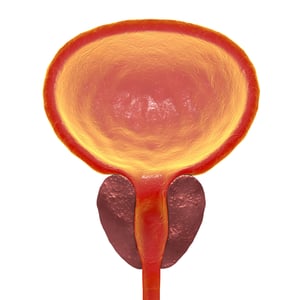
In the following article we focus on this study and discuss the effects of the uroselective α1-blocker tamsulosin on urodynamic parameters in male patients with type I primary bladder neck obstruction. Moving forward, an obstruction with high voiding pressure accompanied by poor flow and narrowing at the neck of the bladder with concomitant silent external sphincter on electromyography forms the basis for primary bladder neck obstruction. Alpha blockers, which are used in the treatment of primary bladder neck obstructions do not have evidence for objective urodynamic efficacy.
Let’s delve into the topic. Available treatment options for bladder neck obstruction are observation of the patient with follow-up, clean intermittent catheterization or bladder neck incision, alpha blockers. Studies conducted to assess the efficacy of the pharmacological approach are nonrandomized and small.
The results of such studies1 have been quite variable and the objective urodynamic evaluation of success has been lacking as success of the treatment has been defined variably by different authors. Moreover, there are few studies2 which have reported pressure flow study outcomes after alpha blockers.
Discussing Methods
Only cases with primary bladder neck obstruction (PBNO) type 1 (males) were considered for the study. The study was conducted from July 2013 to February 2015. Exclusion criteria included absolute indication for surgical intervention, diabetes mellitus, coexisting neurological disease, bladder stones, pelvic surgery, urethral stricture, or allergy to sulfa drugs or α-adrenoceptor antagonists.
All patients underwent uroflowmetry and a representative flow with a minimum voided volume of 150 ml was recorded. Kidney, bladder, prostate, and ureter were imaged with ultrasonography. Cystoscopy or ascending urethrogram was performed to rule out urethral stricture. At this point, in case that all the above investigations were normal, patients were subjected to videourodynamics.
Main Endpoints
- Reduction in minimum detrusor pressure at maximum flow rate (PdetQmax) during voiding phase by 15% from baseline.
- BOOI decrease to <40; What’s more, BOOI was calculated as follows: PdetQmax − 2Qmax (in other words, patients were considered unobstructed if BOOI was <20, obstructed if BOOI was >40; and equivocal if BOOI was between 20 and 40).
- Percentage decrease in BOOI posttreatment of ≥15%.
- IPSS score reduction by roughly 25%.
- Improvement in maximum flow rate (Qmax) by 2.5 ml/s.
- Decrease in the postvoid residue.
Results
The following data was obtained for pre- and post- treatment: Outcome parameters were Pdet-Qmax, BOOI, Qmax, PVR, IPSS, IPSS (Voiding and Storage) QOL question. It was observed that there were reductions in Pdet-Qmax, BOOI, PVR, IPSS, IPSS (voiding and storage) and QOL question. A bladder outlet obstruction index of less than 60 is associated with poor outcomes.
A. Around 42% of patients achieved a >2.5ml/s improvement in Qmax
B. 80% showed IPSS reduction of 25%
C. 57% had improvement in global quality of life and change in pre- and post- treatment score was statistically significant.
In the study, the bladder outlet obstruction index before and after treatment was plotted on a graph with BOOI on Y axis and individual patients on X axis. Around 23% reduction was seen in the bladder outlet obstruction index post treatment. Around 52% of patients had post treatment of bladder outlet obstruction index of <40. 85% showed some improvement in the bladder outlet obstruction index.
Tablet tamsulosin was tolerated well by many patients with few side effects. 47% complained of abnormal ejaculation. 12% developed giddiness at initial usage which eventually subsided over time.
Discussions
All the male patients in this study were diagnosed with primary bladder neck obstruction based on the videourodynamic test results. Following diagnosis, all of them were initiated with tamsulosin.
Similar studies3 have been conducted with similar improvements in parameters. Qmax improvement was 2.3ml/s in this study. It can be safely said that alpha blockers offer significant improvements in flow rates for these patients. The concept behind this was offered by a study by Yamanishi et al.4 saying that alpha blockers relax the bladder neck and actually decrease the energy loss due to obstruction in patients with bladder neck obstruction when compared to normal circumstances. The study also shows significant statistical and clinical improvement in urodynamic pressure flow parameters indication reduction in outlet obstruction.
Conclusion
According to the study, tamsulosin 400 micrograms once a day is effective in the reduction of bladder outlet obstruction on pressure flow studies in male patients with primary bladder neck obstruction (PBNO) type 1. Patients with BOOI of >60cm of water are less likely to respond to alpha blockers even though there is a placebo effect seen in these patients. Although minor, abnormal ejaculation has been observed as a side effect in plenty of young patients.
References
- Nitti VW, Lefkowitz G, Ficazzola M, Dixon CM. Lower urinary tract symptoms in young men: Videourodynamic findings and correlation with noninvasive measures. J Urol. 2002;168:135–8.
- Mishra VK, Kumar A, Kapoor R, Srivastava A, Bhandari M. Functional bladder neck obstruction in males: A progressive disorder? Eur Urol. 1992;22:123–9.
- Primary bladder neck obstruction: urodynamic findings and treatment results in 36 men. Trockman BA, Gerspach J, Dmochowski R, Haab F, Zimmern PE, Leach GE. J Urol. 1996 Oct; 156(4):1418-20.
- Yamanishi T, Yasuda K, Sakakibara R, Hattori T, Tojo M. The effectiveness of terazosin, an alpha1-blocker, on bladder neck obstruction as assessed by urodynamic hydraulic energy. BJU Int. 2000;85:249–53


